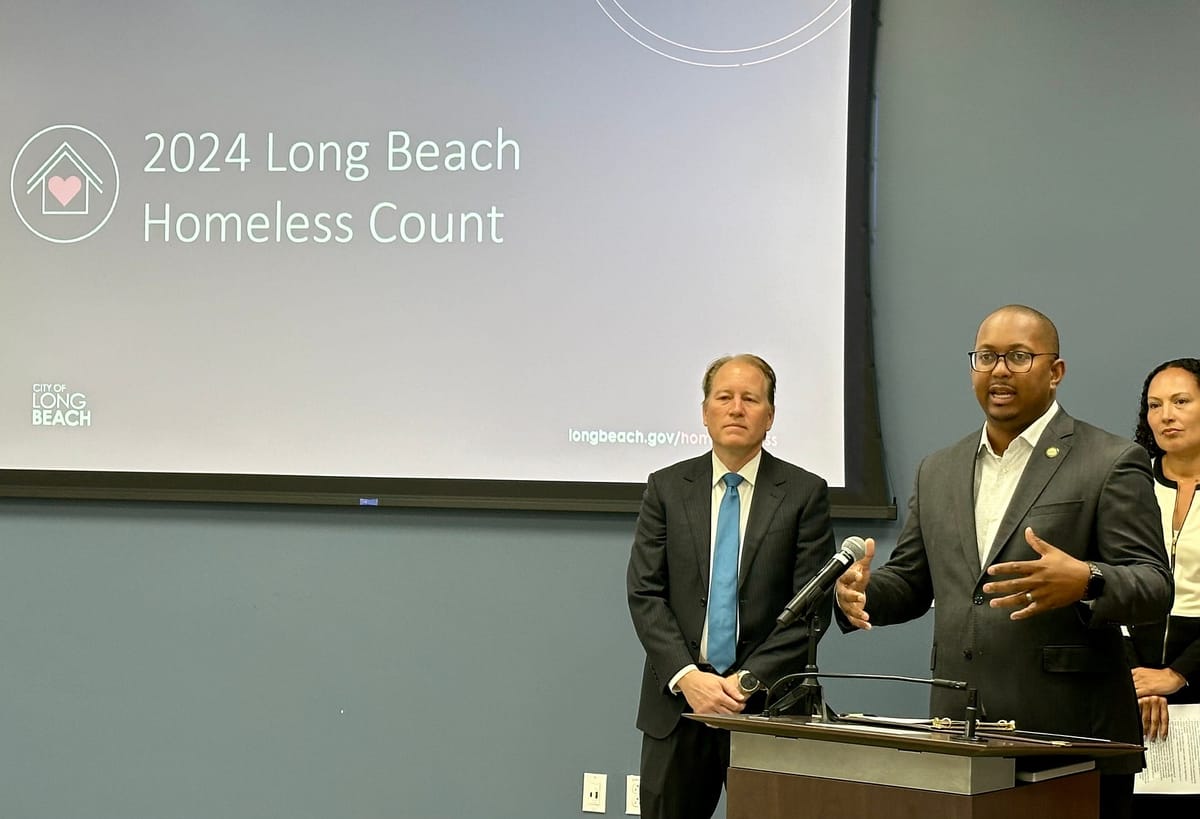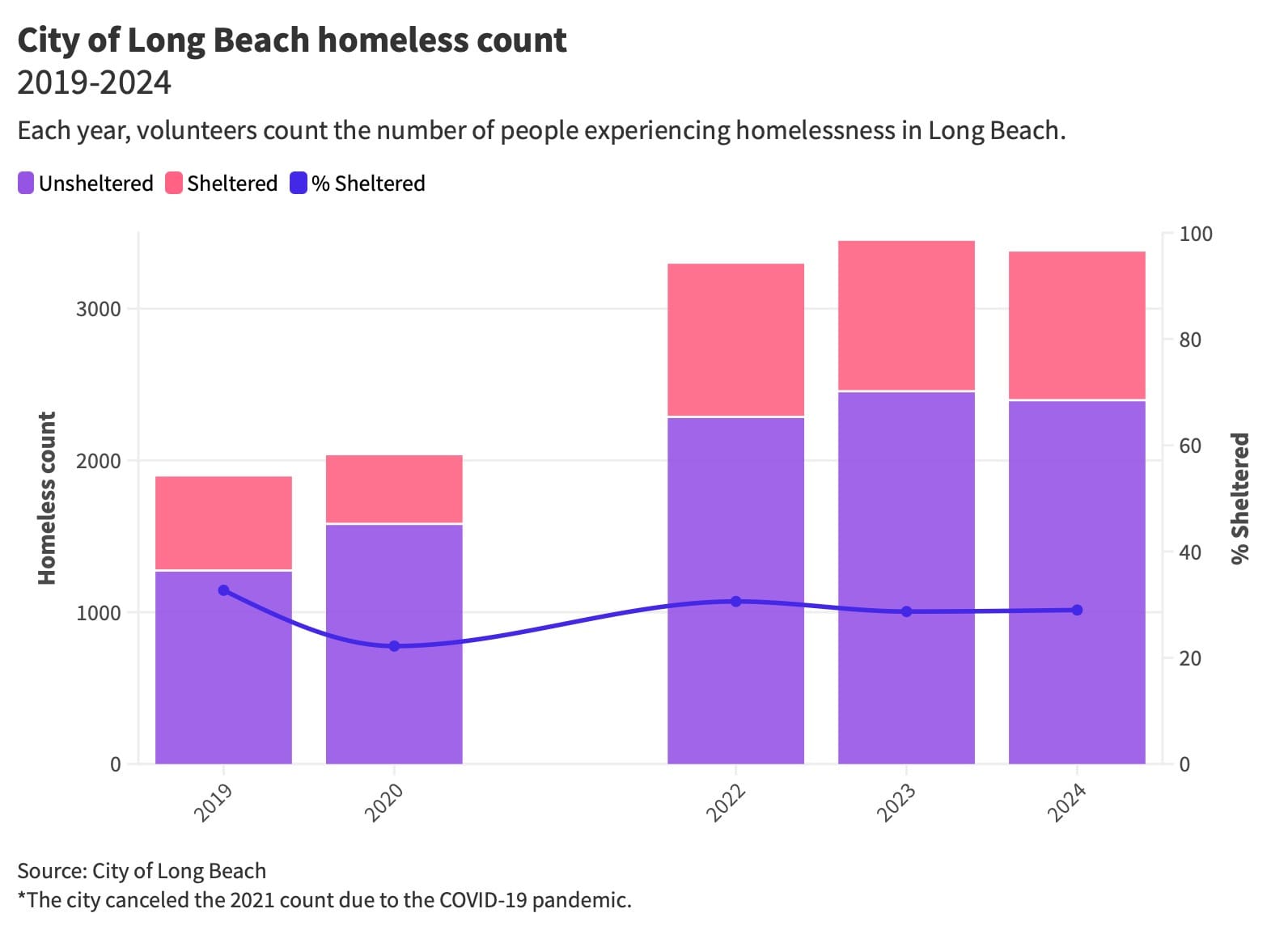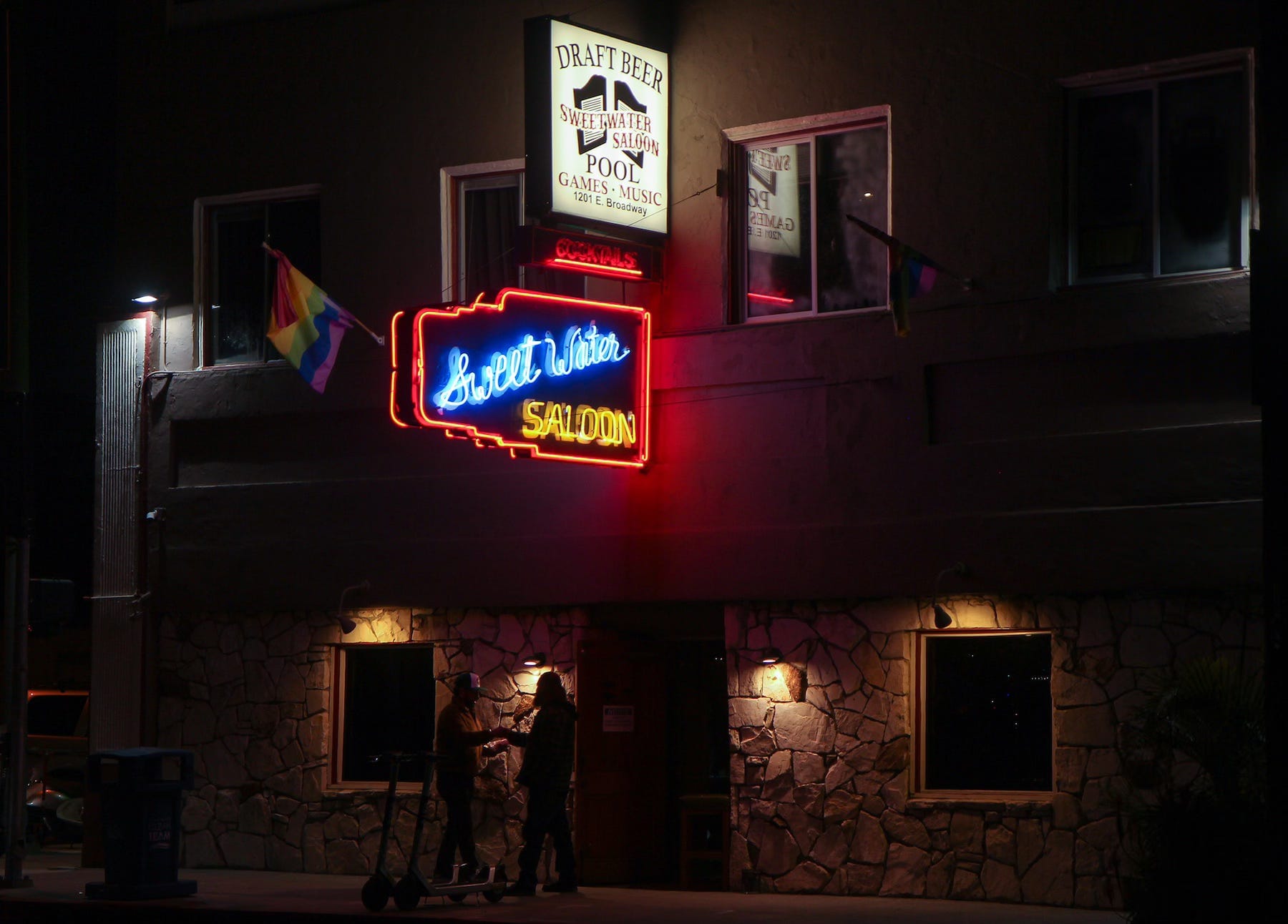Long Beach homeless population dropped slightly since 2023, but city leaders say they’re not taking ‘victory lap’
The annual homeless count, which was held in January, found 3,376 people in the city without permanent housing; nearly three quarters of them are unsheltered.

Long Beach’s homeless population shrank by 2.1% since early 2023, according to data the city released Wednesday, but officials acknowledged there’s plenty more to be done to provide help and housing for those who need it.
The annual homeless count, which was held in January, found 3,376 people in the city without permanent housing, a decrease of 71 people since the 2023 tally of 3,447 unhoused people. Of the 2024 total, 72.7% of people were unsheltered; the remainder were staying in emergency shelters or other temporary situations.
The numbers come from the January “point in time” count, when city workers and volunteers counted people in shelters, mapped where they saw people living on the streets, and spoke to any who were willing and asked them questions about themselves and what kinds of help they needed.
Officials said it’s the first time the city has reported a decrease in homelessness since 2017. But some who work with the homeless think the count may have been skewed by cold, wet weather that drove people out of their customary camping spots.
“We saw very few people out,” said Paige Pelonis, a nonprofit operator who was one of several hundred volunteers who took part in the January count.
“It’s the only set of numbers that we really have, (but) is it an accurate reflection of how many people don’t have housing? Probably not.”

During a press conference Wednesday, Mayor Rex Richardson specifically pointed to the drop in the city’s oldest and youngest unhoused populations.
Homelessness is down 49.7% for youth aged 18 to 24, which is “a significant reduction of youth homelessness in our city,” Richardson said.
For those under 18, homelessness went down 37%. For ages 55 to 64, the city saw a reduction of 9.4%. A 3% reduction was recorded for unhoused people over 65.
Richardson also announced a 35% decrease in homelessness among the Asian Pacific Islander community and a 22% reduction in the Latino community.
But a city report on the data also shows a minuscule reduction – eight people – in the number of unhoused Black people, which took the place of Latinos as the city’s largest homeless demographic; and homelessness among the 35-to-44 and 45-to-54 age brackets, which together make up 45% of the total population, rose by more than 8%.
“A lot of great work has been done over the course of the past year,” Richardson said. “But let's be crystal clear — there's a lot of work ahead of us. We have to continue to prioritize the development of housing citywide, which is what we set out to do.”
Long Beach and other cities regularly count their homeless residents because data is required to get some state and federal funding for homeless programs and services, and it also helps officials decide how best to use that funding and other resources.
The number of unhoused people in Long Beach has fluctuated significantly over the past decade. The 2015 count found 2,345 people without stable housing, then the number dipped below 1,900 in 2017 and slowly climbed for several years before spiking to nearly 3,300 in 2022. As of last year’s tally, the city’s homeless population was nearly double the 2017 total.
The city has taken several steps to address it, including adding more emergency shelter beds, working with landlords to get housing voucher holders into apartments, speeding up approval of 100% affordable developments, and moving ahead with plans to convert a motel into permanent homes and building a tiny house community, though those last two projects are significantly behind schedule.
But — with more unhoused people dying in Long Beach in 2023 than any year since at least 2017 — officials say they understand their work isn’t done.
“This is certainly not a victory lap,” Deputy City Manager Teresa Chandler said at the press conference. “Success is when the experience of homelessness in Long Beach is rare and brief when it does occur.”
Some advocates want to see Long Beach not only do more, but to try different things.
The city’s Homeless Services Advisory Committee recently voted to send policy recommendations to the City Council that included piloting lower-cost interim solutions such as “safe sleep” managed tent sites; increasing funding for rent assistance and other homelessness prevention programs; and setting a goal of getting at least 40% of the unhoused population into shelter in the next two years.
The committee’s report cited a 2023 Brookings Institution finding that while 30% of unhoused people in Long Beach are sheltered, in San Francisco that number is 43% and in San Diego, it’s 50%.
The fact that nearly three-quarters of people without permanent housing were also unsheltered “should not be acceptable,” said Julie Lie, who chairs the homeless services committee and volunteers for homeless programs at St. Luke’s Episcopal Church in Long Beach.
“That should tell us that there’s a crisis out there and an immediate need to provide the 72% unsheltered with a safe place to be at night, and we need to do better.”
Pelonis said the unhoused people she works with are often reluctant to stay in congregate shelters, where they don’t think they’ll be safe or treated well, and she echoed the homeless service committee’s call to try “really creative, outside-the-box, all the possible options — let’s just try them all.”
After the press conference, City Councilmember Al Austin called the modest drop in homelessness “encouraging news” and said it indicates the city’s more focused efforts are making a difference.
“I don’t know that that’s necessarily felt in the community, but I think it’s important for us to be transparent and communicate what the data shows,” he said.
This story has been updated with more coverage of the results of the annual homeless count. It has also been updated to clarify that 72.7% of people were unsheltered in the 2024 count.
Alicia Robinson has been on strike from the Long Beach Post since March 21, yet she’s still covering the city without pay.
Improvements on proposed LGBTQ+ corridor could be slow, costly, report says
Jason Ruiz • May 8, 2024

String lights, neon wall art and historical plaques could be headed to Broadway as part of the Long Beach’s proposed LGBTQ+ Corridor project but the early-phase additions could take as long as two years to complete, accordi…
Read full story →
We need your support.
Subcribe to the Watchdog today.
The Long Beach Watchdog is owned by journalists, and paid for by readers like you. If independent, local reporting like the story you just read is important to you, support our work by becoming a subscriber.





